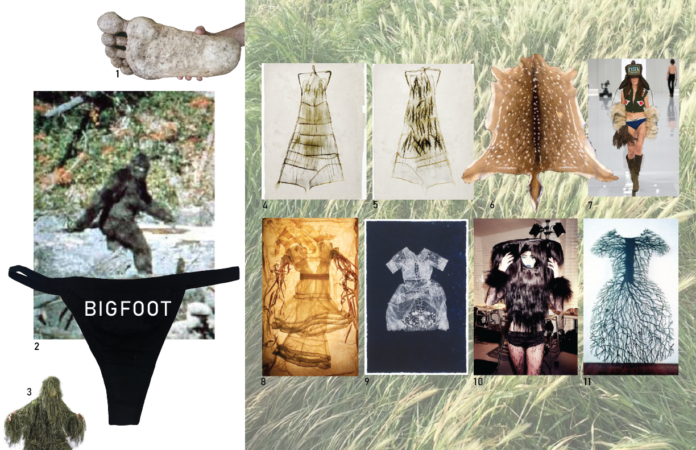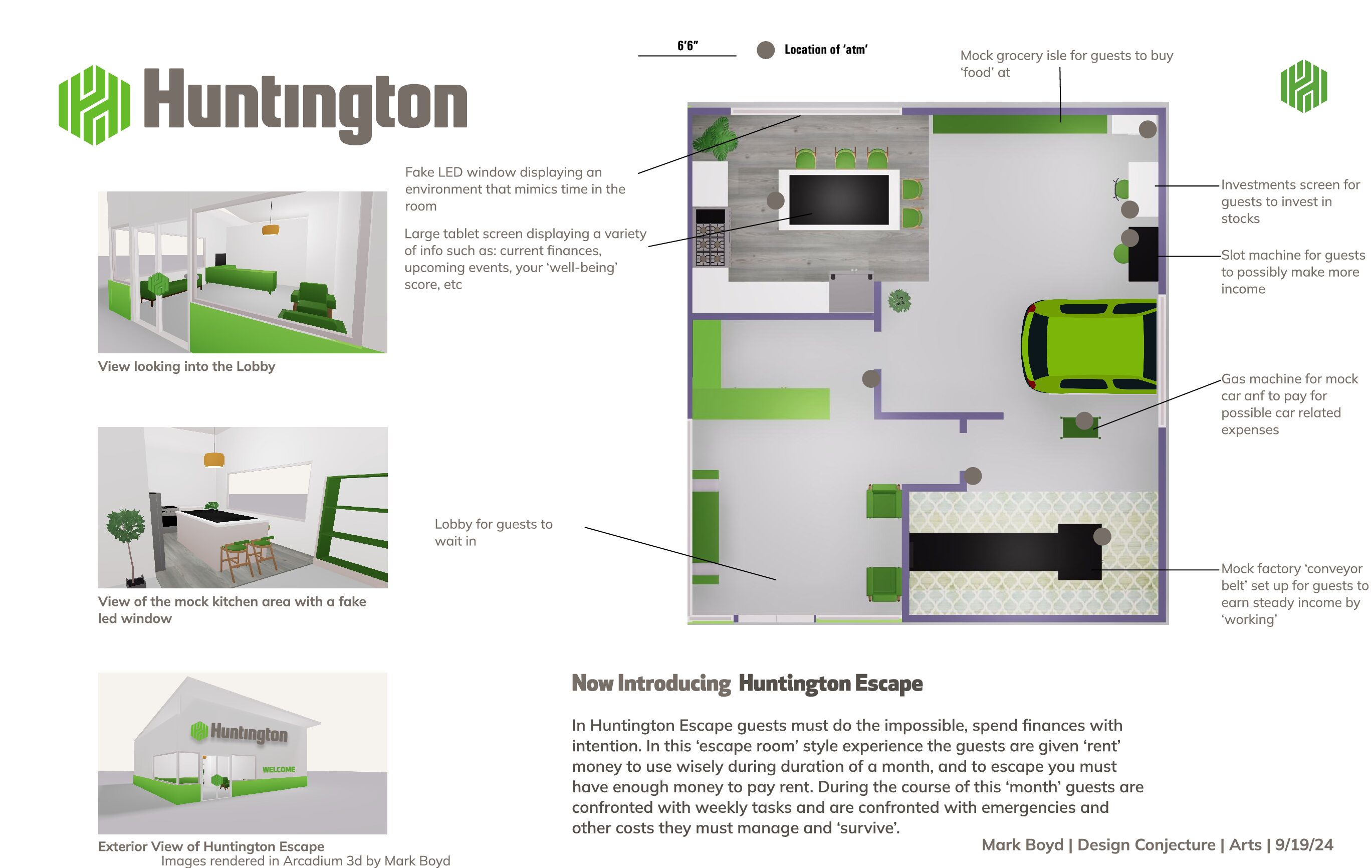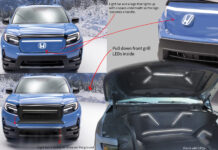Above: Moodboard for Bigfoot inspired runway collection

“Bigfoot on the Runway” is a balance between gimmick and authenticity. In an interview with ODNR Historical Programs Administrator Phil Hutchinson, who grew up in Southeastern Ohio, Phil states that “The Appalachian identity is a manufactured identity, but it’s still an identity.”
This collection explores the manufactured side of the Bigfoot and Appalachian identity through trashy and campy imagery. This coincides with the deeper generational connections Southeastern Ohioans have with nature and folklore.
While the Bigfoot myth originated in Western America, there have been 3 alleged sightings of Bigfoot in Salt Fork State Park (Bigfoot 2020).
To Wong Foo is a movie about bringing campy spectacle to a rural community, and how that social disruption brought people together. The literal making of the film, the spectacle of Hollywood in rural America, did something similar for the people of Loma, Nebraska. High production runway fashion would be a spectacle in Southeastern Ohio. There is no Southeastern Ohio fashion hub that a runway could be critically presented to, but the relationship people of Loma have with the filming of To Wong Foo shows suggests that rural Ohioans are capable of commenting on pop culture, especially if it is a reflection or even misrepresentation of their own identity.
To bring runway fashion to rural communities is to confront notions that rural Ohioans exist in isolation from larger culture, that they only have political values. From Roger May’s Looking at Appalachia, we know these notions along with other stereotypes might be true, but there isn’t just one truth (Nunes 2017). May chooses to expand and complicate the Appalachian identity through crowdsourced photo collections. I’d like to build on May’s strategy by arguing that because Appalachia has a history of being misrepresented in photography, other visual mediums, such as runway fashion, are necessary to account for more nuanced Appalachian identity.
“Bigfoot on the Runway” doesn’t directly do much to mitigate waste other than locally sourcing materials and processes, or using upcycled, deadstock, or recycled materials. However, it does demonstrate that social, political, economic, and environmental values can intersect in contribution to the Appalachian identity, which is different from placing sustainable messaging on top of an existing culture.
1Bigfoot Sasquatch footprint casting. https://www.etsy.com/listing/795814200/bigfoot-sasquatch-footprint-casting
2Patterson, R. (1967). Still from Patterson-Gimlin Film.
3NITEHAWK Kids/Childrens Woodland Camo Camouflage Ghillie Burlap Suit. https://www.amazon.co.uk/Nitehawk-Childrens-Woodland-Camouflage-Ghillie/dp/B07BTG18CC
4Oettinger, B. (2014). Chloros Apron [Grasses, silk (raw and fabric), beeswax, thread]. https://www.behance.net/gallery/21315657/Chloros-Schuerze-Chloros-Apron
5Oettinger, B. (2014). Chloros Apron [Grasses, silk (raw and fabric), beeswax, thread]. https://www.behance.net/gallery/21315657/Chloros-Schuerze-Chloros-Apron
6Genuine Axis Deer Hide Second Grade- Naturally Sourced #279-G. https://www.etsy.com/listing/1631618338/genuine-axis-deer-hide-second-grade?ga_order=most_relevant&ga_search_type=all&ga_view_type=gallery&ga_search_query=fallow+deer+hide&ref=sr_gallery-1 7&frs=1&sts=1&content_source=6b84ebd9fa314bd70e171d0289c8c213b18f6da7%253A1631618338&organic_search_click=1
7Dsquared2 Fall 2024
8Dextras, N. (2019). Laura [Photograph of skeletonized Laurel leaves, Birch bark, Deer skin, fabric, ice]. https://nicoledextras.com/portfolio/frozen-textiles/iceshifts/
9Hammond, V. (2006). The Great Memory [Relief printed Litho on handmade Kozo paper, glass beads, thread]. https://littlejohncontemporary.com/valerie-hammond
10Charlie Le Mindu Womenswear AW10. Photography Saga Sigurdardottir
11Hunt, B. (1995). Root Dress [Plasma-arc cut steel]. Collection Winnipeg Art Gallery. https://barbhunt.ca/2021/01/14/sewing-with-fire/
Benes, R. (2014, March 24). When John Leguizamo Fixed Up My Hometown. Esquire; Esquire. https://www.esquire.com/entertainment/movies/a28046/to-wong-foo-loma-nebraska/
Bigfoot-like creature spotted at Salt Fork State Park in Ohio, men claim. (2020, February 10). The Enquirer. https://www.cincinnati.com/story/news/2020/02/10/bigfoot-grassman-in-ohio-creature-spotted-in-salt-fork-state-park/4712106002/
Nunes, M. (2017, November 17). Ways of Unseeing: Crowdsourcing the Frame in Roger May’s Looking at Appalachia. Southern Spaces. https://southernspaces.org/2017/ways-unseeing-crowdsourcing-frame-roger-mays-looking-appalachia/
May, R. (2021). Looking at Appalachia [Photography]. https://lookingatappalachia.org/




